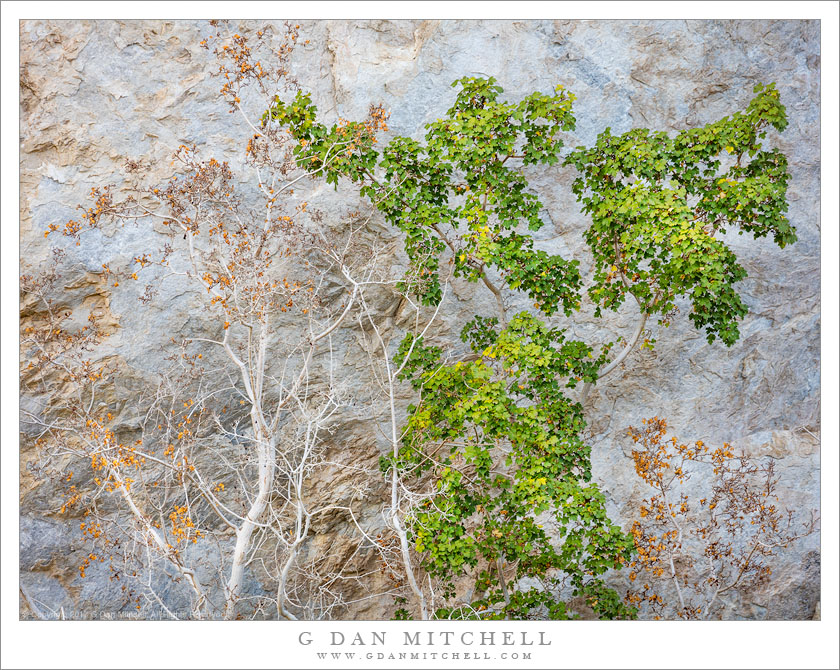
Dormant and Alive. Great Basin National Park, Nevada. September 26, 2017. © Copyright 2017 G Dan Mitchell – all rights reserved.
Dormant and live trees form patterns against a cliff face, Great Basin National Park
On my first visit to Nevada’s Great Basin National Park near the end of September, my initial impression was that the “big features” of the park that probably draw the most visitors are two: The Lehman Caves near the entrance and visitor center and the high, alpine area close to Wheeler Peak, the highest point in the park and the second tallest in the state of Nevada. I did not visit the caves, but I did spend a fair amount of time high up near the peaks, photographing and hiking to the alpine lakes and the bristlecone pine groves. (My one regret is that I started out a bit too late on the bristlecone pine visit, and I didn’t have enough time to cover the additional two miles up to and back from the Wheeler Glacier.)
Eventually, as typically happens, I had made my acquaintance with the iconic subjects in the park, and I started to feel the familiar impulse to look around a bit for things that might not be so obvious or immediately impressive. The first foray was up a gravel road past some less developed campgrounds, where I came across at section of low cliff running alongside a gravel road and stream bed. The autumn colors were just beginning to arrive here, so I got out and wandered a bit, looking for juxtapositions of rock and tree. This little vignette attracted my attention, and I was fascinated by the pairing of a living tree full of leaves (albeit just about to turn colors and drop) and the nearby bare, white branches holding only dead leaves, with both set off from the rock behind them.
 G Dan Mitchell is a California photographer and visual opportunist. His book, “California’s Fall Color: A Photographer’s Guide to Autumn in the Sierra” is available from Heyday Books and Amazon.
G Dan Mitchell is a California photographer and visual opportunist. His book, “California’s Fall Color: A Photographer’s Guide to Autumn in the Sierra” is available from Heyday Books and Amazon.
Blog | About | Flickr | Twitter | Facebook | Google+ | LinkedIn | Email
All media © Copyright G Dan Mitchell and others as indicated. Any use requires advance permission from G Dan Mitchell.

